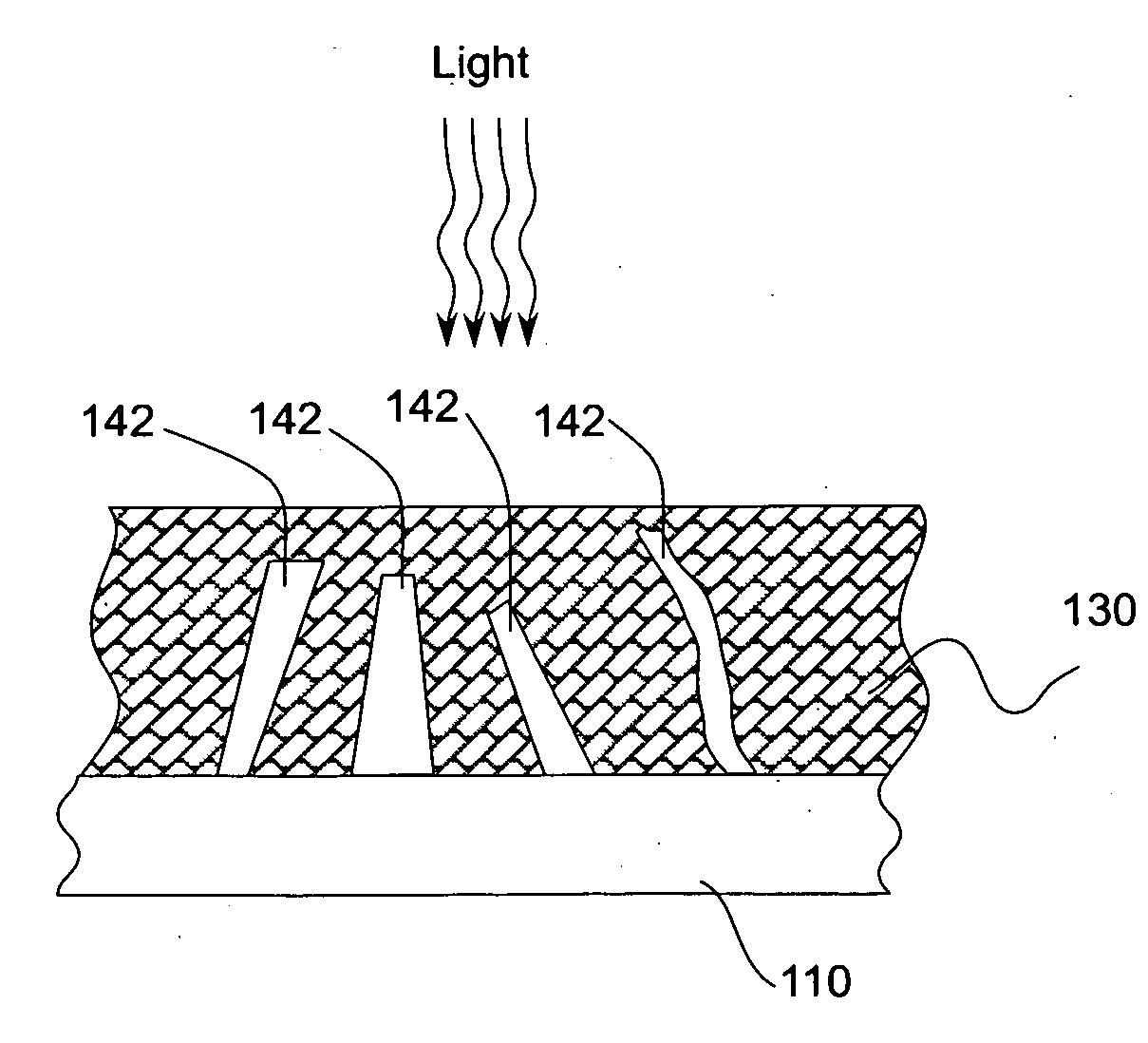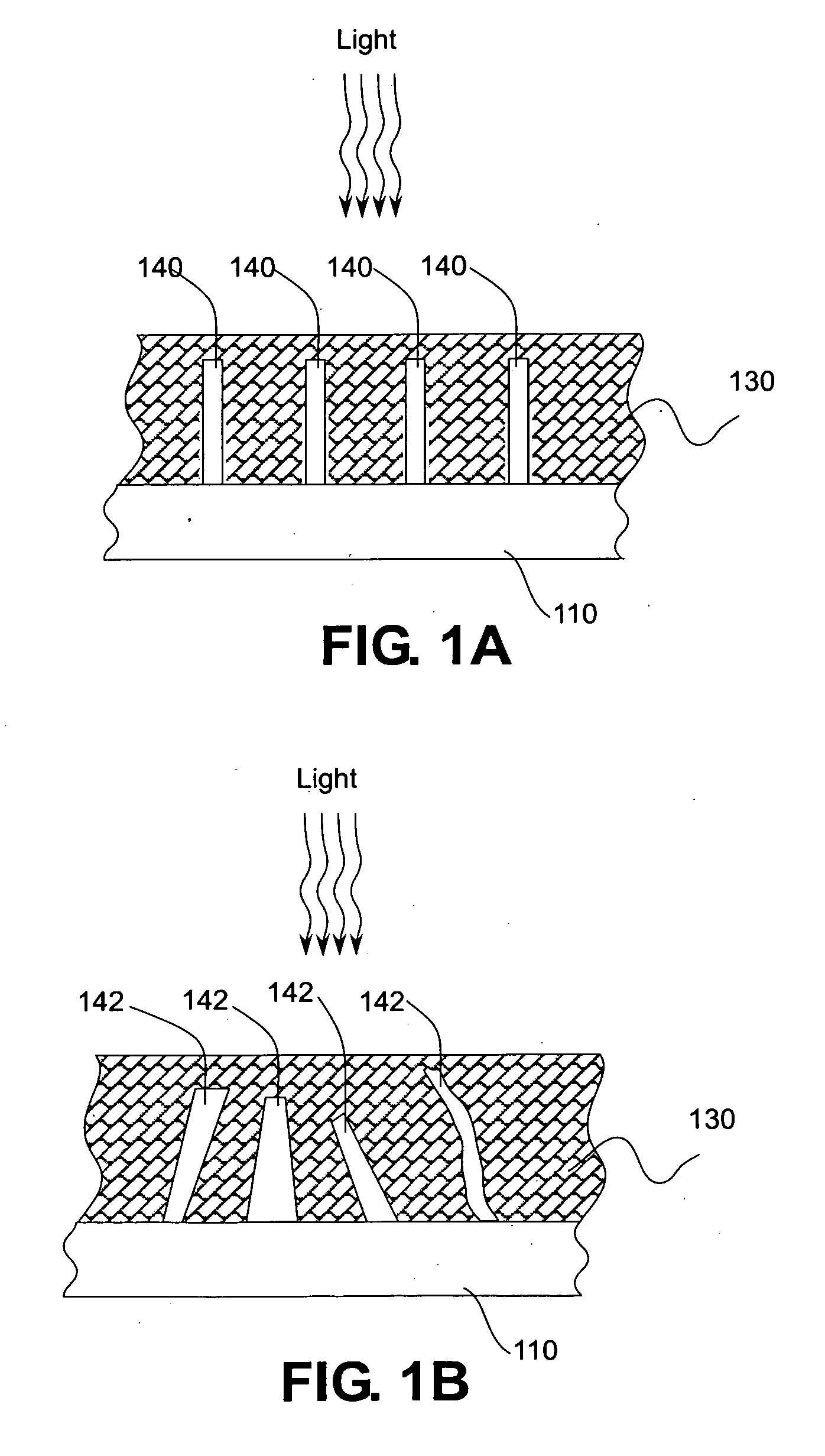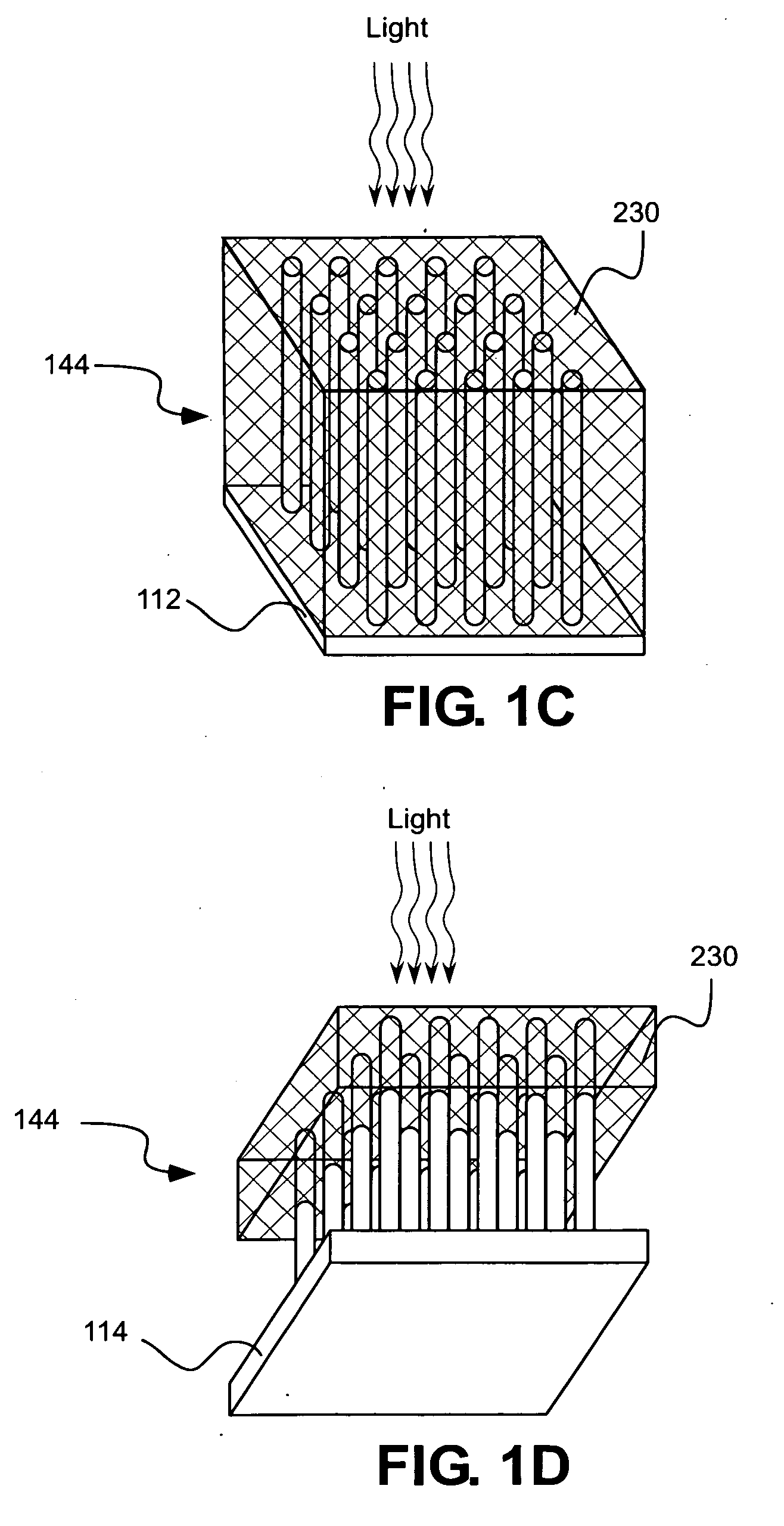Structures of ordered arrays of semiconductors
a semiconductor and array technology, applied in the field of structure for the conversion of light into energy, can solve the problems of difficult to meet the requirements of the material of the absorber, and the situation is especially severe for the indirect band gap absorber, etc., to achieve low minority carrier diffusion length, high impurity density, and low density of defects
- Summary
- Abstract
- Description
- Claims
- Application Information
AI Technical Summary
Benefits of technology
Problems solved by technology
Method used
Image
Examples
example 1
Photoelectrochemical Cell Comprising Grown Semiconductor Structures
[0044]As described in additional detail below, vertically-aligned wire arrays may be used for solar energy conversion where the wires in the arrays provide primary light absorption and charge carrier separation. Preferably, wires in the vertically-aligned wire arrays are formed with relatively high aspect ratios, that is, wires in the wire arrays are long in the direction of received light, but have relatively small radii to facilitate efficient radial collection of carriers. These radii can be small even for relatively impure absorber materials. Solar cell devices according to an embodiment of the present invention have relatively large area arrays of vertically aligned wires, means to make electrical junctions to such wire arrays and means to make electrical contacts to the backsides of these devices. In one embodiment, solar energy conversion is obtained by using wires as the primary light absorption and charge ca...
example 2
Photoelectrochemical Cell Comprising Deposited Semiconductor Structures
[0066]Another embodiment of the present invention comprises a photoelectrochemical cell having radial rod array junction photoelectrodes prepared by electrodeposition of Cd(Se, Te) and is described below. The II-VI semiconductors CdSe and CdTe are both direct gap, highly absorbing materials having band gaps (1.7 eV for CdSe and 1.4 eV for CdTe) well-matched to the solar spectrum. The materials can both be deposited by a number of techniques. Electrodeposition of CdTe and CdSe is well established, and the photovoltaic or photoelectrochemical cell performance of the electrodeposited forms of these materials are usually limited by low minority-carrier collection diffusion lengths in the absorber phase.
[0067]Embodiments of the present invention may use several methods for the fabrication of entire arrays of vertically aligned semiconductor nanorods. When a deposition technique that does not induce one-dimensional gro...
example 3
Photoelectrochemical Cell Comprising Etched Semiconductor Structures
[0086]Another embodiment of the present invention comprises a photoelectrochemical cell having silicon pillars produced by etching a planar substrate. The silicon etched pillars may be fabricated using a low temperature Reactive Ion Etching (RIE) process. Such a process may be performed at nearly liquid nitrogen temperatures and can produce very deep etched structures. The planar substrate may be etched using photoresist as the masking medium. FIGS. 17A-17G show SEM images of pillars prepared by using an etch process. The photomask used to pattern the resist had areas containing arrays of 5, 10, 20, and 50 um diameter spots spaced in a hexagonal close packed array so that the same total filling fraction of pillars would result in each case. FIG. 17A shows an array of 50 μm diameter pillars and FIG. 17B shows a single 50 μm diameter pillar. FIG. 17C shows 20 μm diameter pillars. FIG. 17D shows 10 μm diameter pillars ...
PUM
 Login to View More
Login to View More Abstract
Description
Claims
Application Information
 Login to View More
Login to View More - R&D
- Intellectual Property
- Life Sciences
- Materials
- Tech Scout
- Unparalleled Data Quality
- Higher Quality Content
- 60% Fewer Hallucinations
Browse by: Latest US Patents, China's latest patents, Technical Efficacy Thesaurus, Application Domain, Technology Topic, Popular Technical Reports.
© 2025 PatSnap. All rights reserved.Legal|Privacy policy|Modern Slavery Act Transparency Statement|Sitemap|About US| Contact US: help@patsnap.com



